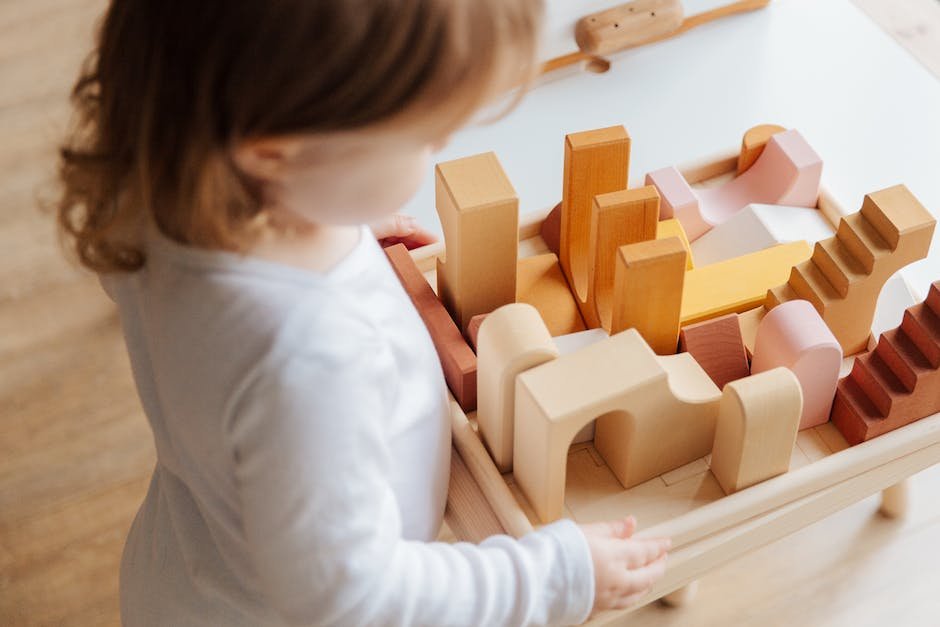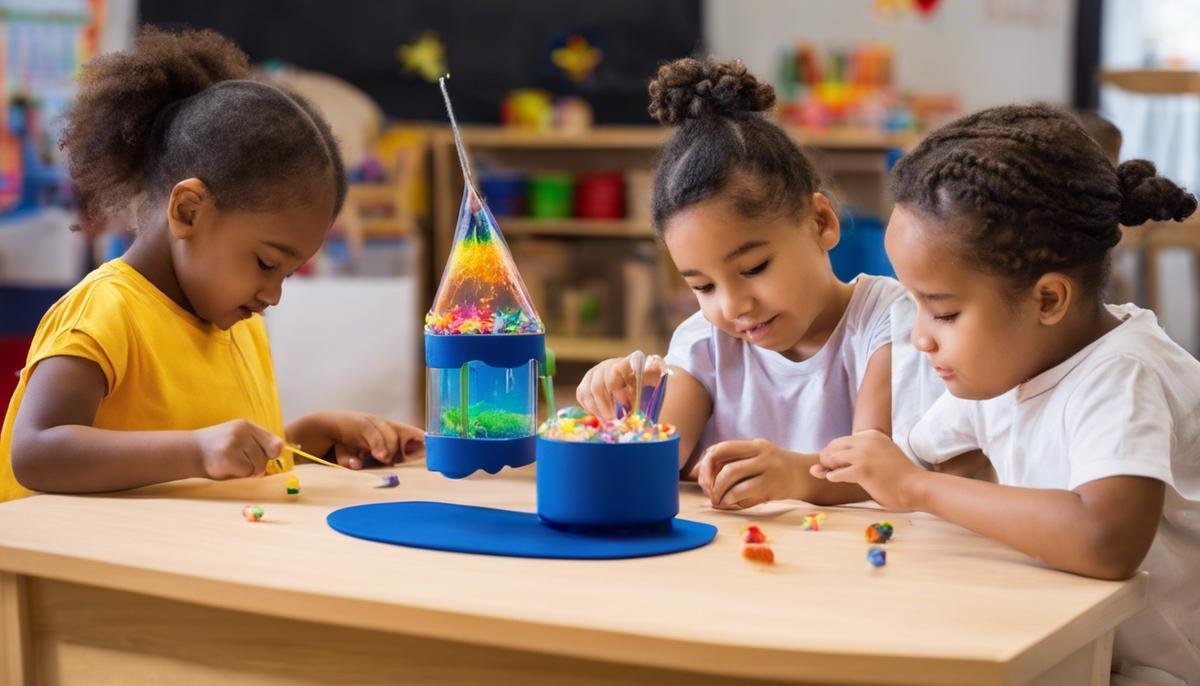
The intricate tapestry of the human senses constructs a vivid picture of the world around us, yet for those on the autism spectrum, this sensory experience can be profoundly different. Autism spectrum disorder, a complex neurological condition characterized by diverse social and behavioral challenges, is often accompanied by a unique set of sensory sensitivities that can deeply impact daily life. Among these sensitivities, the sense of smell holds a particularly poignant place, bearing the potential to either enrich or complicate the sensory landscape for individuals with autism. This essay delves into the nuances of sensory processing in autism, shedding light on why and how the sense of smell can veer towards the poles of hyper- or hyposensitivity, and the implications these variations have on social interaction, development, and quality of life.
Understanding Autism and Sensory Sensitivities
Understanding Sensory Experiences in Kids with Autism
Have you ever noticed how a child with autism might cover their ears when they hear a loud noise or prefer certain textures over others? These behaviors are windows into the unique sensory experiences often associated with autism spectrum disorder (ASD). Diving into these differences not only fosters understanding but can also enhance the way families, educators, and peers support children with autism.
Sensory experiences for children with ASD aren’t just different; they can be more intense, less intense, or altogether unique. Imagine the sound of a school bell being so overwhelming it’s painful, or the feeling of a tag in the back of a shirt becoming utterly unbearable. For many children with autism, the world can be a sensory minefield where the unexpected pop of a balloon might be the equivalent of a firework going off in their immediate vicinity.
What’s behind these intense sensory experiences? Autism often affects the nervous system, altering the way sensory information is processed. This means that routine sensations can get dialed up several notches, leading some kids to become sensory seekers, looking for more input to stimulate their understimulated senses. Others might be sensory avoidant, shying away from overwhelming sights, sounds, tastes, textures, and scents.
Understanding and adapting to these unique sensory needs lays the groundwork for comfort and growth. Here are a few support strategies:
- Embrace a Sensory-Informed Environment: Create spaces that respect sensory preferences, like quiet, dimly-lit areas for downtime, or spaces for physical activity to help those sensory-seeking kiddos get the stimulus they crave.
- Use Sensory Tools: Incorporate items like noise-canceling headphones to manage auditory sensitivities or fidget toys to assist with focus and self-regulation.
- Develop a Sensory Diet: Structured sensory activities throughout the day can help regulate sensory input. Tailoring activities to individual needs is key – think swinging for a proprioceptive boost or using play-doh for tactile play.
- Practice Predictability: Establish routines to give a heads-up for potential sensory overload situations. A predictable routine can greatly reduce anxiety spurred by sensory surprises.
- Encourage Communication: Provide tools for non-verbal children to express their sensory preferences. PECS (Picture Exchange Communication System) and other communication aids can be invaluable.
- Partner with Professionals: Occupational therapists specializing in sensory integration can be game changers, creating personalized plans to address sensory challenges.
- Educate Peers and Community: Raising awareness helps cultivate empathy and understanding, creating supportive networks for children with autism.
Parenting, teaching, or simply being a friend to a child with autism means rethinking sensory experiences and approaching each situation with care. Embracing these steps can make all the difference, turning a world that’s often too loud, too bright, or too rough into a place that’s just right for them.
Let’s create a space where every child can thrive, no matter how they experience the world around them.
Endeavoring to be sensory-sensitive isn’t just an act of love, but a commitment to inclusivity, one that enhances the beautiful tapestry that is our community and the diverse individuals within it.

Sense of Smell in Autism: Hyper- or Hyposensitivity
Oh, those little noses and the big mysteries behind them for our kiddos on the autism spectrum! Now, let’s dive into the nuances of smell sensitivity in autism, which can be quite a rollercoaster, not just for the kids but for the whole family.
Some children with autism have a superhero-like sense of smell. One whiff of dinner cooking, and they can tell you all the spices you’ve put into the pot – and maybe even those you forgot! But on the flip side, this heightened sense of smell can be overwhelming, especially when “offensive” scents like perfumes or cleaners come into play. Picture a walk down the detergent aisle in the grocery store; for many families, it’s a gauntlet that can lead to a swift exit.
Then there’s the flip side – kiddos who seem to hardly notice smells at all, yes, even the stinky ones. This can be a challenge in teaching personal hygiene or even in identifying hazardous situations like a gas leak or spoiled food. Consistency in teaching safety around smells is key, even if it seems like the messages aren’t getting through at first.
For those on the spectrum with varied smell sensitivities, adapting the household to their needs is crucial. Families often find themselves turning into detectives – what’s setting off discomfort today? Could it be the scented soap or the new air freshener? This is where trial and error become best friends with labels such as “unscented” or “fragrance-free.”
And let’s not forget eating – flavors and smells go hand in hand, don’t they? When it comes to mealtimes, simplifying recipes and being mindful of strong odors that could cause discomfort can make all the difference to a peaceful family dinner. Patience is the secret ingredient here – taste buds and smell receptors might need time to acquaint themselves with certain foods.
Lastl
All in all, smell sensitivity in autism is a spectrum in itself. It’s about creating a comforting olfactory environment and equipping those with ASD with the tools to manage the smorgasbord of scents life throws their way. Adjustments, understanding, and a nose for what might trigger discomfort are all part of the daily routine, making the world a more accommodating place for super sniffers and those who are less influenced by the world’s fragrances alike.

Coping Strategies for Families
Expanding our toolkit to accommodate varied smell sensitivities isn’t just a courtesy; it’s an essential part of creating a nurturing environment for every family member. Especially with children on the autism spectrum, who may either have superhero-like sensitivity to scents or barely notice them at all, it’s crucial to create strategies that promote comfort and safety.
First and foremost, maintaining an emphasis on clean and neutral-smelling spaces is key. Opt for fragrance-free or minimally scented cleaning products. This simple switch can drastically reduce the potential for discomfort caused by strong odors. If certain rooms, like the bathroom or kitchen, tend to harbor stronger smells, consider investing in an air purifier. Not only do these devices help in managing odors, but they also contribute to better air quality.
When it comes to personal care products, hypoallergenic and unscented options can be a godsend. These products reduce the risk of triggering a sensory overload and are also generally kinder to sensitive skin. For families who have individuals with limited smell sensitivity, it can be tricky to teach the importance of personal hygiene. Utilizing visual aids, routine charts, and pleasant-tactile sensory experiences can help bridge understanding of personal care routines.
Cooking and mealtimes present another aspect of daily life where smells abound. Simplifying recipes may help, but don’t be afraid to get creative. Consider introducing one new ingredient at a time to gauge reactions and build a database of ‘safe’ foods. Designate certain days for experimenting with flavors, so that mealtimes remain predictable and less intimidating.
On the other end of the spectrum, addressing reduced olfactory sensitivity is equally important. Regular checks for spoiled food and the presence of smoke could mitigate potential hazards. Establishing routines, such as regular fridge clean-outs and testing smoke detectors, helps reinforce safety measures.
Navigating smell sensitivities in social situations is yet another challenge. Preparing a ‘sensory safety kit’ with comforting objects – like a familiar-smelling handkerchief or a preferred essential oil – can empower individuals to manage their sensory environment when away from home. Open communication with hosts of social gatherings is also vital. Explain the need for olfactory considerations, and don’t be shy about packing a meal if necessary.
Last but not least, fostering an understanding within your family unit contributes to a warm, inclusive environment. Engage siblings and family members in discussions about smell sensitivities. This can result in a supportive team eager to ensure their home is a comforting haven for all.
Through mindful practices and empathetic communication, it’s entirely possible to craft a home environment that is considerate of all types of smell sensitivities. Remember, what works for one may not work for another. Patience, persistence, and a willingness to adapt can create a sensory-friendly home where everyone can thrive.

Impact on Social Interaction and Development
Exploring the Impact of Smell Sensitivity on Social Skills and Development
As we journey together on the path of nurturing our little ones, particularly those with unique sensibilities, we uncover the profound impact smell sensitivity can have on social skills and development. It’s not just about what meets the eye or touch; the way a child interacts with the world through their nose can shape their experiences and relationships.
For children grappling with smell sensitivity, everyday scents are more than a background detail—they’re front and center. This heightened awareness can influence their comportment in social settings. Imagine walking into a classroom and feeling sidelined by the aroma of markers or the scent of another child’s snack. For some, such an experience can mean the difference between a day full of engaging interactions and a challenging episode of sensory overload.
Navigating social nuances also becomes complex when a child’s reaction to smells deviates from the norm. Others might not understand why a classmate is repulsed by the lunchroom’s odor or feels unsettled by the cologne of a familiar adult. This misunderstanding can potentially lead to social isolation or misinterpretation of the child’s behavior as finicky or overly cautious.
On the flip side, children who experience under-sensitivity need to cultivate alternative methods for engaging with their environments. A muted sense of smell could mean missing out on non-verbal olfactory cues—like the comforting scent of a caregiver or the warning sign of something burning—that are essential for safe and effective social interaction.
Developing social skills in this context often requires a tailored approach, focusing on empathy and education for both the child and their peers. Reinforcing positive interactions and understanding through social stories can guide all parties on what to expect and how to support one another. It enriches the social fabric and bridges the gap created by differences in sensory processing.
The fostering of emotional intelligence and social competence is indispensable. Introducing role-play scenarios and guided instruction on recognizing and handling various smells can buffer a child’s social experience. It aids in developing coping strategies for unexpected odorous encounters while also allowing a child to articulate their needs and preferences without embarrassment.
Friendships and relationships are nuanced dances we all learn, and for children with heightened or diminished smell sensitivity, mastering the steps requires us to play both the role of patient teachers and supportive companions. Building a toolbox of social skills is paramount, and this includes knowing how to politely articulate discomfort, seek help when overwhelmed, and, importantly, respect the olfactory boundaries of others.
Amid all these considerations, one thing remains clear: inclusivity and understanding. As parents, educators, and friends, weaving a supportive environment is the foundation for all children to grow, learn, and thrive. Through mindful accommodation and adjustment, we’re not only enriching the lives of those with unique sensory needs; we’re enhancing the tapestry of community and connection that binds us all.
In essence, smell sensitivity isn’t a barrier—it’s simply a different way of perceiving the world, one which we can all learn from and adapt to with compassion. With each step we take towards olfactory mindfulness, we open the doors a little wider to a socially fulfilling life for every child.

As we navigate the aromatic world around us, it’s evident that the relationship between autism and the sense of smell is both complex and consequential. These sensory challenges are more than just minor inconveniences; they are fundamental aspects of how individuals with autism perceive and engage with their environments and the people within them. By intertwining scientific insights with compassionate strategies, we empower not only those with sensory sensitivities to harness their unique perceptions but also enable their families, educators, and communities to create more inclusive, understanding spaces. The insights and practices shared here offer a beacon of support, guiding us towards a future where the sensory experiences of every individual, especially those with autism, are acknowledged and embraced as integral threads in the vibrant tapestry of human diversity.




